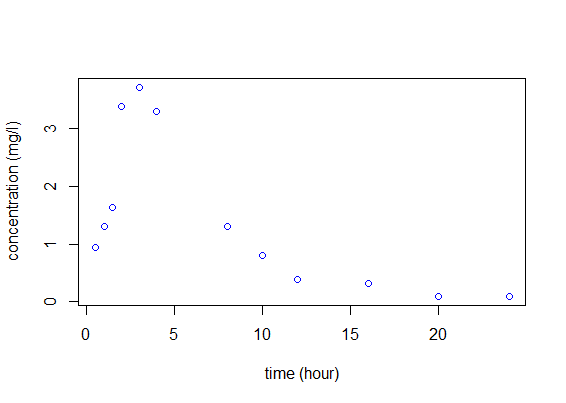Difference between revisions of "Test"
Jump to navigation
Jump to search
(Page créée avec « ==''' The population distribution of the individual parameters '''== ===='''Introduction'''==== ====='''''How to mathematically represent a mixed effects model?'''''===... ») |
m |
||
| (4 intermediate revisions by the same user not shown) | |||
| Line 1: | Line 1: | ||
| + | <!-- some LaTeX macros we want to use: --> | ||
| + | $ | ||
| + | \newcommand{\Re}{\mathrm{Re}\,} | ||
| + | \newcommand{\pFq}[5]{{}_{#1}\mathrm{F}_{#2} \left( \genfrac{}{}{0pt}{}{#3}{#4} \bigg| {#5} \right)} | ||
| + | $ | ||
| + | |||
| + | |||
==''' The population distribution of the individual parameters '''== | ==''' The population distribution of the individual parameters '''== | ||
===='''Introduction'''==== | ===='''Introduction'''==== | ||
| + | |||
====='''''How to mathematically represent a mixed effects model?'''''===== | ====='''''How to mathematically represent a mixed effects model?'''''===== | ||
| − | Assume that the distribution of the vector of individual parameters | + | |
| + | |||
| + | Assume that the distribution of the vector of individual parameters $\psi_i$ depends on a vector of individual covariates $\beta c_i$: | ||
| + | |||
\begin{equation} \label{prior2} | \begin{equation} \label{prior2} | ||
| − | \ | + | \psi_i \sim \psi(\psi_i | \beta c_i ; \theta) |
\end{equation} | \end{equation} | ||
| − | A mixed effects model assumes here that $\ | + | |
| + | A mixed effects model assumes here that $\psi_i$ can be decomposed as follows: | ||
| + | |||
\begin{equation} \label{prior3} | \begin{equation} \label{prior3} | ||
| − | \ | + | \psi_i = H(\psi_{pop},\beta, c_i,\eta_i) |
\end{equation} | \end{equation} | ||
| + | |||
| + | |||
where | where | ||
| − | \ | + | |
| − | + | * $\psi_{pop}$ is a ``typical'' value of $\psi$ in the population, | |
| − | + | * $c_i$ is a vector of covariates, | |
| − | + | * $\beta$ is a vector of ''fixed effects'', | |
| − | + | * $\eta_i$ is a vector of ''random effects'', ''i.e.'' $(\eta_i, 1 \leq i \leq N)$ are random vectors with mean 0. | |
| − | + | ||
| − | + | In this model, part of the inter-individual variability is explained by the covariates $c_i$. | |
| − | + | The random effects describe the part of IIV which is not explained by the covariates. | |
| + | |||
| + | |||
| + | [[File:individual1.png|600px]] | ||
Latest revision as of 11:04, 29 April 2013
$ \newcommand{\Re}{\mathrm{Re}\,} \newcommand{\pFq}[5]{{}_{#1}\mathrm{F}_{#2} \left( \genfrac{}{}{0pt}{}{#3}{#4} \bigg| {#5} \right)} $
The population distribution of the individual parameters
Introduction
How to mathematically represent a mixed effects model?
Assume that the distribution of the vector of individual parameters $\psi_i$ depends on a vector of individual covariates $\beta c_i$:
\begin{equation} \label{prior2} \psi_i \sim \psi(\psi_i | \beta c_i ; \theta) \end{equation}
A mixed effects model assumes here that $\psi_i$ can be decomposed as follows:
\begin{equation} \label{prior3} \psi_i = H(\psi_{pop},\beta, c_i,\eta_i) \end{equation}
where
- $\psi_{pop}$ is a ``typical value of $\psi$ in the population,
- $c_i$ is a vector of covariates,
- $\beta$ is a vector of fixed effects,
- $\eta_i$ is a vector of random effects, i.e. $(\eta_i, 1 \leq i \leq N)$ are random vectors with mean 0.
In this model, part of the inter-individual variability is explained by the covariates $c_i$. The random effects describe the part of IIV which is not explained by the covariates.
